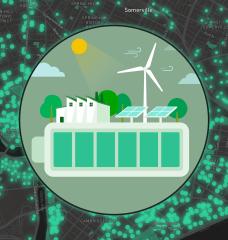
Infrastructure is critical in sustaining economic growth and productivity. It improves millions of lives by boosting firms’ productivity and households’ incomes. Roads, railways, and power support economic activities. Good infrastructure attracts industries and generates spillover effects by creating jobs and increasing output.
Yet, infrastructure investment lags in many countries because it lacks financing. The Asian Development Bank (ADB) and the Asian Development Bank Institute (ADBI) estimate that the South Asia region needs USD 730 billion each year on average to meet its infrastructure needs for up to 2020. Energy, particularly electricity, accounts for 51% of the total expenditure (USD 371 billion per year), 77% of which is on building new capacity and 23% for maintaining and replacing infrastructure. Asia has 1,077 regional infrastructure projects that need funding amounting to USD 30 billion per year. More than 60% of these projects are in Pan-Asia, with 16 % in Southeast Asia, 1% in Central Asia, and 3% in South Asia; 30% are in energy, needing a total of USD 80 billion for 2010–2020.
Financing energy infrastructure can be particularly challenging in Asia given uncertain long-term returns as well as potentially poor investment conditions. Although many energy infrastructure projects are financed through public-private partnerships, the sharing of risks between the public and private sectors is a problem, particularly in the absence of a strong government guarantee. Impediments to investment include the limited capacity to plan, prepare, and execute projects; weak rule of law; a discouraging regulatory environment; and the absence of a successful record of accomplishment of related projects.
Energy projects are either large (geothermal, hydro, electric, bioenergy, ocean) or small and community-based (wind, solar); both face financing constraints.
Large projects require long-term and patient investment and are best funded by pension and insurance funds from the private sector. However, the rate of return from infrastructure is uncertain and volatile and bankable infrastructure projects are often scarce, resulting in significant investment gaps.
This problem can be overcome by leveraging the spillover effects of infrastructure investment. For example, electricity supplied by power plants enables industries to produce more and create jobs, generating more sales tax and income tax revenues. Part of these revenues can be returned to power plant investors as a subsidy, which will allow them to further invest and realize higher rates of return.
Traditionally, infrastructure investors receive returns only from electricity users. The governments collect taxes from power suppliers and do not return the revenue to their investors. By sharing with energy investors, the spillover tax revenues are now increased because businesses benefit from the power supply. Consequently, the rate of return on power investment rises and becomes stable because tax revenues are stable. In turn, these stable revenue streams can help generate more bankable energy projects. In an integrated region, the spillover effects will not only benefit one country but also its neighbors, thus promoting cross-border infrastructure investment.
Small-scale solar and wind power projects can be financed by a community-based fund. Thanks to technological innovation, a small solar power panel can now produce enough electricity for a household for one day. Communities can provide their own solar and wind power without large electric power plants.
Solar and wind energy infrastructure, however, is expensive for individual households. Hometown investment trust funds can solve this problem. This innovative form of financing has been adopted as a national strategy in Japan, with funds collected from individuals and invested in community activities.
In Hokkaido, for example, 20 wind power generators (USD 2 million each) were launched by public-private partnerships, with residents investing USD 1,000 each in a fund. The power generated is sold to a power company and residents receive dividends every year from the sale of electricity. A similar financing scheme was used for solar projects, where individuals invested USD 1,000-5,000 each to build 377 power plants in Iida city. In Nara prefecture, a 100-year old dam was revitalized after some 250 residents invested USD 525,000 to operate it.
Renewable energy — solar, wind, geothermal, hydro, bio, ocean — is expected to be the primary source of electricity in the long term. By 2030, around 48% of the region’s demand will be met by renewable energy. Precipitously falling oil prices, however, raise the question: Does it make sense to invest in renewable energy? The answer is yes.
As Asia continues to experience high economic growth, it must follow a path of sustainable, and low-carbon green growth. Countries need to mobilize investment that will support the growing demand for energy and natural resources. Their challenge is to scale up financing of energy infrastructure and explore innovative ways of financing the infrastructure.






